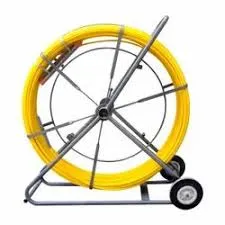
-
 Afrikaans
Afrikaans -
 Albanian
Albanian -
 Amharic
Amharic -
 Arabic
Arabic -
 Armenian
Armenian -
 Azerbaijani
Azerbaijani -
 Basque
Basque -
 Belarusian
Belarusian -
 Bengali
Bengali -
 Bosnian
Bosnian -
 Bulgarian
Bulgarian -
 Catalan
Catalan -
 Cebuano
Cebuano -
 Corsican
Corsican -
 Croatian
Croatian -
 Czech
Czech -
 Danish
Danish -
 Dutch
Dutch -
 English
English -
 Esperanto
Esperanto -
 Estonian
Estonian -
 Finnish
Finnish -
 French
French -
 Frisian
Frisian -
 Galician
Galician -
 Georgian
Georgian -
 German
German -
 Greek
Greek -
 Gujarati
Gujarati -
 Haitian Creole
Haitian Creole -
 hausa
hausa -
 hawaiian
hawaiian -
 Hebrew
Hebrew -
 Hindi
Hindi -
 Miao
Miao -
 Hungarian
Hungarian -
 Icelandic
Icelandic -
 igbo
igbo -
 Indonesian
Indonesian -
 irish
irish -
 Italian
Italian -
 Japanese
Japanese -
 Javanese
Javanese -
 Kannada
Kannada -
 kazakh
kazakh -
 Khmer
Khmer -
 Rwandese
Rwandese -
 Korean
Korean -
 Kurdish
Kurdish -
 Kyrgyz
Kyrgyz -
 Lao
Lao -
 Latin
Latin -
 Latvian
Latvian -
 Lithuanian
Lithuanian -
 Luxembourgish
Luxembourgish -
 Macedonian
Macedonian -
 Malgashi
Malgashi -
 Malay
Malay -
 Malayalam
Malayalam -
 Maltese
Maltese -
 Maori
Maori -
 Marathi
Marathi -
 Mongolian
Mongolian -
 Myanmar
Myanmar -
 Nepali
Nepali -
 Norwegian
Norwegian -
 Norwegian
Norwegian -
 Occitan
Occitan -
 Pashto
Pashto -
 Persian
Persian -
 Polish
Polish -
 Portuguese
Portuguese -
 Punjabi
Punjabi -
 Romanian
Romanian -
 Russian
Russian -
 Samoan
Samoan -
 Scottish Gaelic
Scottish Gaelic -
 Serbian
Serbian -
 Sesotho
Sesotho -
 Shona
Shona -
 Sindhi
Sindhi -
 Sinhala
Sinhala -
 Slovak
Slovak -
 Slovenian
Slovenian -
 Somali
Somali -
 Spanish
Spanish -
 Sundanese
Sundanese -
 Swahili
Swahili -
 Swedish
Swedish -
 Tagalog
Tagalog -
 Tajik
Tajik -
 Tamil
Tamil -
 Tatar
Tatar -
 Telugu
Telugu -
 Thai
Thai -
 Turkish
Turkish -
 Turkmen
Turkmen -
 Ukrainian
Ukrainian -
 Urdu
Urdu -
 Uighur
Uighur -
 Uzbek
Uzbek -
 Vietnamese
Vietnamese -
 Welsh
Welsh -
 Bantu
Bantu -
 Yiddish
Yiddish -
 Yoruba
Yoruba -
 Zulu
Zulu


ਅਕਤੂਃ . 31, 2024 02:21 Back to list
twin and earth cable price
Twin and Earth Cable Price An Overview
When it comes to electrical installations, choosing the right type of cable is crucial for safety, efficiency, and cost-effectiveness. Among the various types of electrical cables available, Twin and Earth cable stands out as a popular choice, especially for fixed wiring in residential and commercial buildings. Understanding the price factors associated with Twin and Earth cables can help consumers make informed choices about their electrical projects.
What is Twin and Earth Cable?
Twin and Earth cable is a type of electrical cable consisting of two insulated conductors (live and neutral) and an uninsulated earth conductor. This cable is primarily designed for indoor applications and is often used to connect light fixtures, sockets, and other electrical appliances. Its construction typically features PVC insulation and sheathing, which provide resilience against environmental factors and mechanical damage.
Factors Influencing Price
Several factors contribute to the price of Twin and Earth cables, including
1. Cable Size and Ratings Twin and Earth cables come in various sizes and current ratings, ranging from 1.0mm² to 10.0mm² or higher. Larger cables capable of handling more power tend to be more expensive due to the increased material costs and complexity of manufacturing.
2. Material Quality The quality of materials used in manufacturing the cable can significantly affect the price. Cables made from high-purity copper are generally more expensive than those made from lower quality or recycled copper. Additionally, thicker insulation and better-quality sheathing can lead to a higher price point but also enhance durability and safety.
twin and earth cable price

3. Market Demand The prices of Twin and Earth cables are subject to market demand and supply fluctuations. During peak construction periods, the demand for electrical cabling may rise, leading to increased prices. Conversely, in slower market conditions, prices may stabilize or decrease.
4. Manufacturer and Brand Different manufacturers may price their products based on brand reputation, quality assurance, and innovation. Well-known brands with a history of high-quality products may charge a premium for their cables, while lesser-known brands might offer competitive pricing.
5. Bulk Purchases Buying Twin and Earth cables in bulk can often lead to significant savings. Wholesalers and suppliers may offer discounts for large orders, making it a cost-effective option for contractors and electrical professionals.
Typical Price Range
As of 2023, the price of Twin and Earth cable can vary widely based on the factors mentioned above. Generally, consumers can expect to pay anywhere from £0.50 to £2.50 per meter, depending on the gauge and insulation quality. For a typical residential wiring project, a homeowner might need several hundred meters of cable, making it essential to factor these costs into the overall budget.
Conclusion
In summary, Twin and Earth cables remain a staple in electrical installations due to their versatility and ease of use. Understanding the factors influencing their price can help consumers make better decisions based on their project requirements and budget constraints. Whether you are a homeowner planning a DIY project or a contractor managing a large-scale installation, being aware of the cost implications of Twin and Earth cables ensures that you can achieve a balance between safety, efficiency, and affordability in your electrical works. Always consider purchasing from reputable suppliers to ensure you receive quality products that meet safety standards.
Latest news
The Unique Design of Cable Socks
NewsJun.04,2025
Swivel Connectors in Industrial Automation
NewsJun.04,2025
Safety Features of Link Sticks
NewsJun.04,2025
How to choose the best cable pulling winch for sale
NewsJun.04,2025
Fish tape safety precautions
NewsJun.04,2025
Essential Maintenance Tips for Cable Pulling Tools
NewsJun.04,2025











